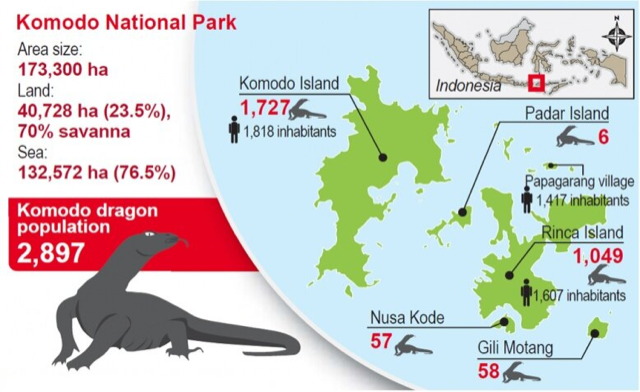UPSC Articles
Komodo Dragon could become extinct
Part of: GS Prelims and GS-III – Biodiversity; Conservation; Climate change
In news
- A recent study conducted by Australian universities has found out that the Komodo dragon could become extinct in the next few decades due to climate change.
Important value additions
Komodo dragon
- Scientific Name: Varanus komodoensis.
- They are the largest and heaviest lizards on Earth.
- They have long, flat heads with rounded snouts, scaly skin, bowed legs, and huge, muscular tails.
- They can eat almost anything, including invertebrates, birds, and mammals.
- They have venom glands loaded with toxins which secrete anticoagulants.
- Habitat: Komodo National Park, a UNESCO World Heritage site, is situated in the Island of Komodo (eastern Indonesia) and is the only habitat for this lizard species.
- Threats: (1) Anthropogenic factors; (2) Less prey; (3) Climate change
- Conservation: (1) IUCN Status: Vulnerable; (2) CITES: Appendix I
Do you know?
- In February 2019, the Australian government officially declared the first known extinction of a mammal (Bramble Cay melomys) as a result of human-induced climate change.














